BACK TO WEATHER-BLOG MENU
New! Fine Art Prints & digital images for sale-
Welsh Weather & Dyfi Valley landscapes Slide-Library - Click HERE
In the garden, the butterflies finally started to appear - orange tips, holly and common blues and the three whites. The commas did a no-show this year - they normally appear in March but the temperatures probably saw to that being a non-event.
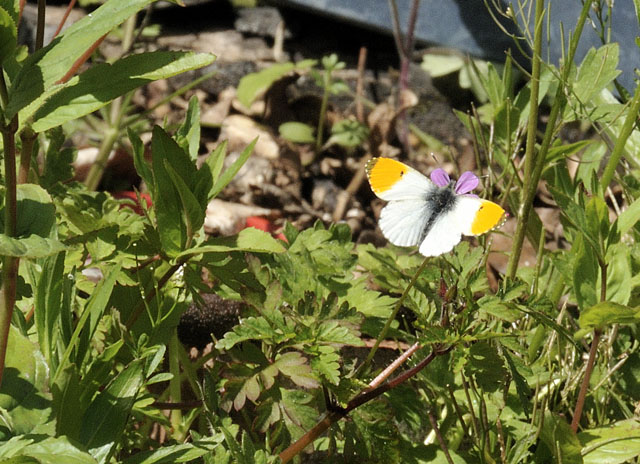
On the coast, the thrift is in full bloom at last, but the mackerel were late to arrive: normally I can bag up in late April but they have only been around in numbers this past fortnight....
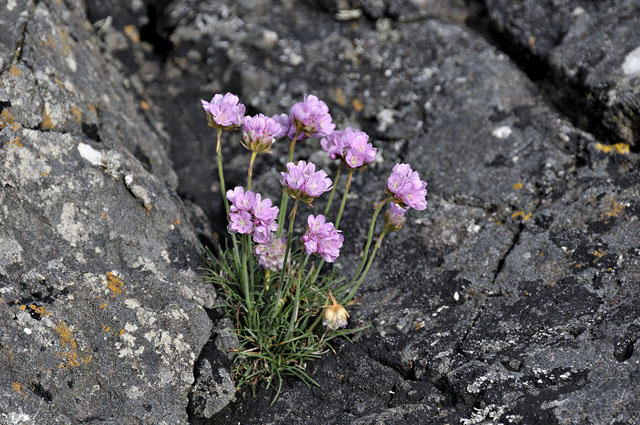
So to the wildwood. The valleys that host the tributaries of the Dyfi are wooded to a large extent, although a lot of it is planted conifers, stood closely rank and file, the ground beneath a bare bed of needles. But here and there are rare and delightful fragments of something much older: the Atlantic rain-forest that once thronged these places. These woods vary a little in their make-up and the reason may well be the bedrock geology: the sedimentary rocks of the district may all look rather grey and slaty but there are thick units of pyrite-rich black shale - such as the Cwmere Formation - and calcareous sandstone - such as the Derwenlas Formation - in among them. The former would weather to produce a very acidic soil, the latter a notably lime-bearing one.
In general, the 'default' tree community hereabouts is dominated by scrub-oak, birch and hazel, a mixture common along the Llyfnant Valley to the south of Machynlleth. This is a magical place to be early in the morning when the bluebells are up...

If you know how to find it, this small hill leads to the top of a crag where you can sit and gaze out over the treetops....

The trees carry copious numbers of epiphytes - ferns that live off the ground. Moments after taking this photo a greater-spotted woodpecker was seen making its way up the trunk of an adjacent tree....
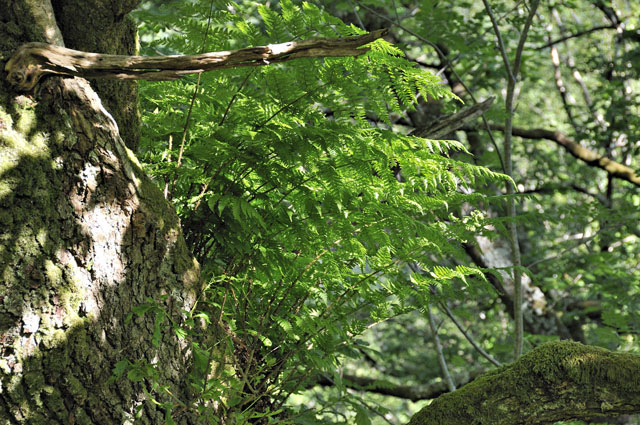
These polypody ferns are a frequent sight among such woods...

Bluebells in the dappled early morning sunshine - there is no better time of day in which to visit these woods....
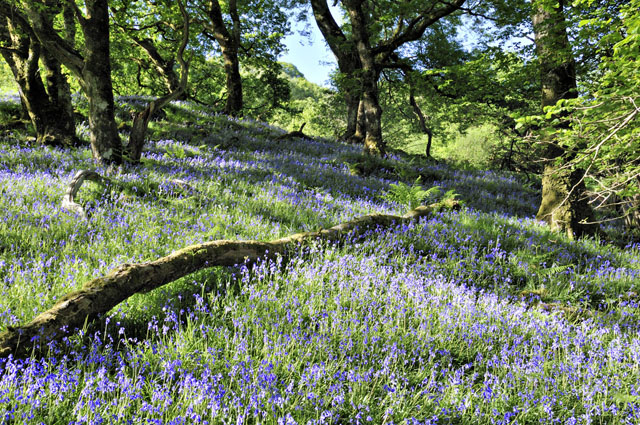
In between the oaks, hazel forms a lower understory layer....
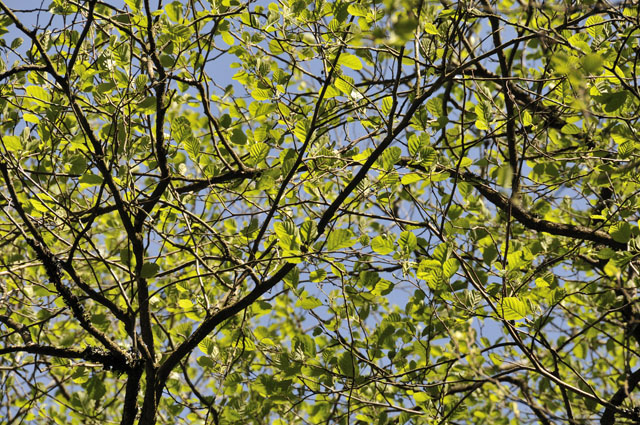
From the side of the road that weaves its cunning and often precipitous way along the southern side of the valley, the most interesting section, botanically-speaking, is difficult to reach, as it occupies a steep-sided section of the riverside, with gorges developed in places. Luckily for the average pedestrian there are two other similar valleys further south-west, of which Cwm Clettwr, above Tre'r-ddol, is the best. It is a nature reserve but with a pleasant path that follows the river's rocky course upstream....

I have many memories of this place. Years ago, with other lads living locally, we would wait for autumnal rains to bring up river levels and work our way up this valley, scrambling from pool to pool, a tiny spinning-rod in one hand and a tobacco tin full of small worms in one pocket, spare hooks and leads, and perhaps a ready-rolled joint or two, in another. There was one place I remember well where steep mossy slabs led up for a few precarious moves from a deep gorge and pool through which the water roared and thundered when the spate was on. Slipping was not an option! By the time we'd got to the top of the woods there would usually be a brace of decent brook-trout apiece, and the walk back down the path would often be done in near or total darkness with the wind roaring through the trees overhead. These are the things that stay with you forever. It had been more than 25 years since I last visited this place...
These woods are likewise dominated by scrub-oak but there are sections, thought to be associated with the calcareous strata, where the botany is a bit different. This is a small-leaved lime, and like all the others it is clearly a very old tree, thick trunks radiating out from a massive bole. This suggests that the woods were at one time coppiced....
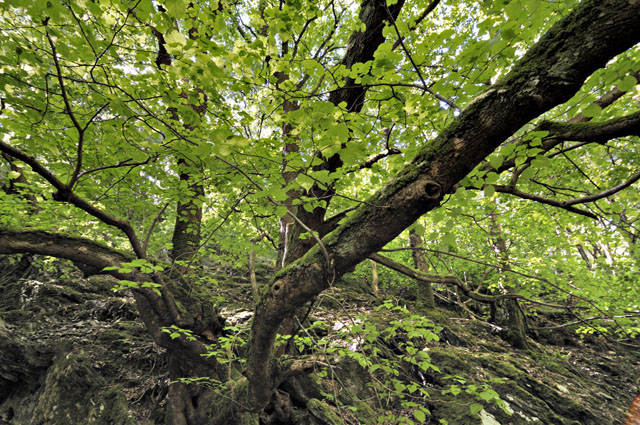
The lime has distinctively symmetrical leaves with a heart-shape to them...
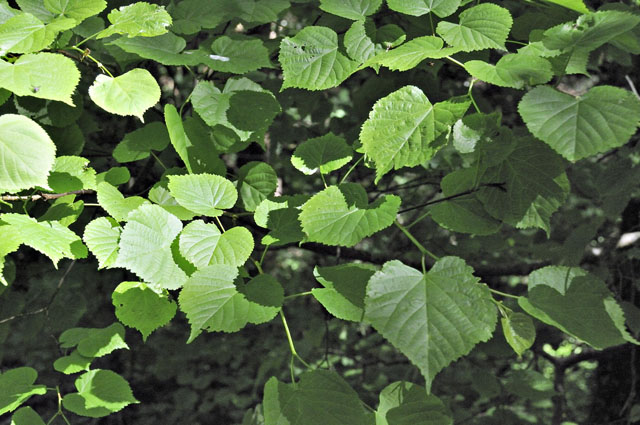
Similar at first glance, but with slightly narrower leaves that have slight asymmetry at their bases, is the wych-elm that also forms part of this ancient community....
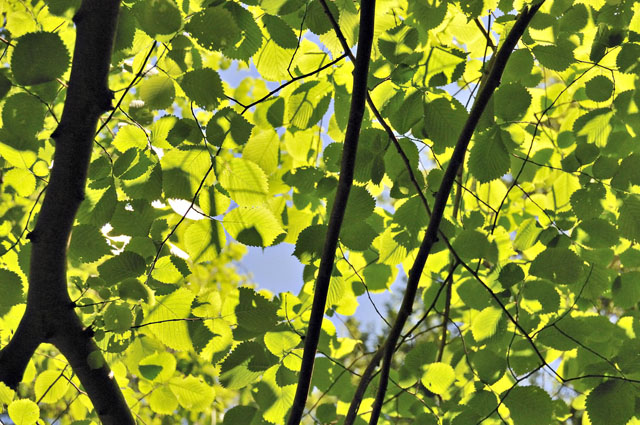
Here's another lime growing right by the river: the bole is enormous....

Ash occurs associated with the lime and wych-elm: there are also scrub-oaks and sycamores adding to the canopy....
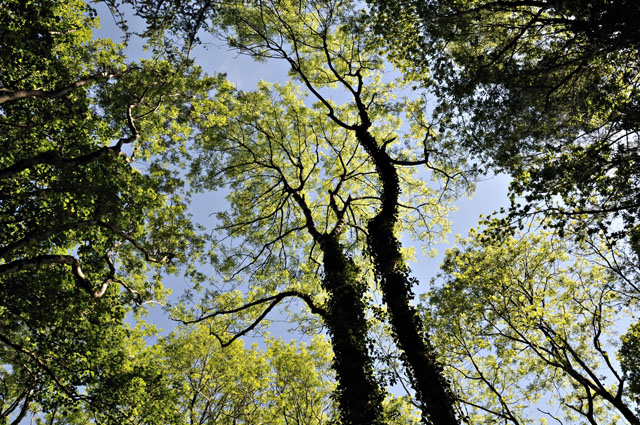
Detail of an ash - the play of light upon its newly-grown leaves brings affirmation that renewal is upon the world....
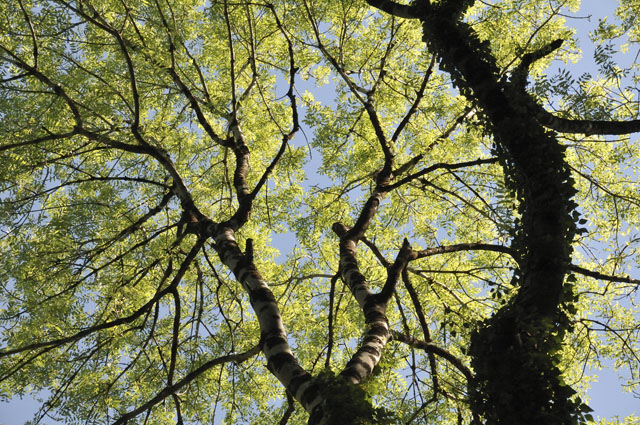
Lime, ash and oak canopy....
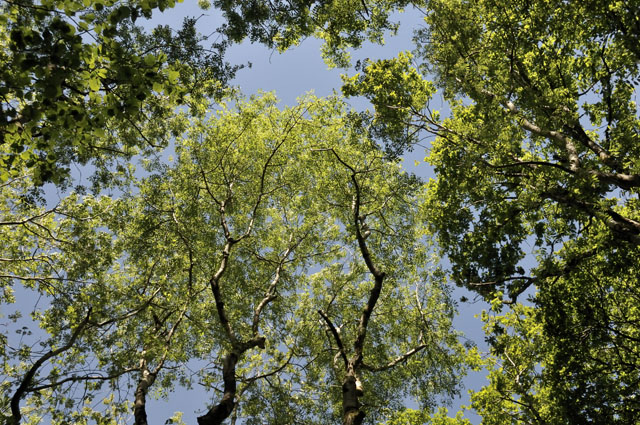
Further upstream, the ecosystem is dominated again by scrub-oak with a rich carpet of ferns on the ground and others on the trees themselves...

This is Yellow Archangel - belonging to the deadnettle family and a good indicator-plant of ancient woodland...

Coed Cwm Clettwr is well worth a visit at any time of year. Spring is the best time to fully appreciate the trees but dusk in a full autumn gale really brings home the atmosphere of the place....
June 12th saw a breakdown in the weather, which was unfortunate as I was guiding some geologists - Dr Sandra Barr and her PhD Student Lisa - who had come all the way from the University of Nova Scotia to look at the Cambrian strata of Coed y Brenin near Dolgellau, and particularly to examine the igneous intrusions in order to compare them to those back home. We were now faced with wildlife of another kind: midges - thousands of them. It was as bad as anything I've seen in Scotland. Here, Dr Barr and Dave Schofield of the British Geological Survey are doing their best to concentrate on the rocks and not sprint off to rid themselves of the clouds of bloodsuckers!
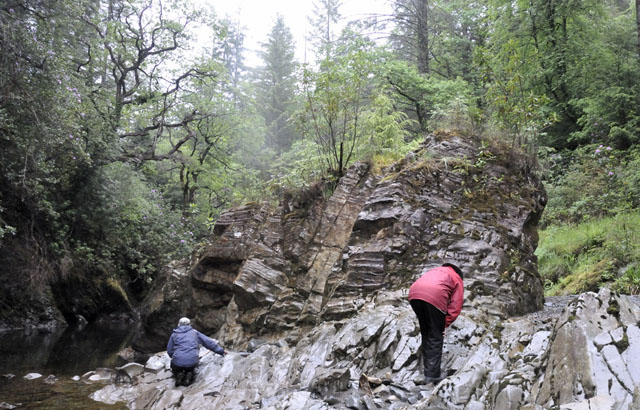
In the end we bailed out and went to the New Precipice Walk, high above and opposite Penmaenpool, where at least it was windy, thereby cheating the midges of the opportunity to torment us further!
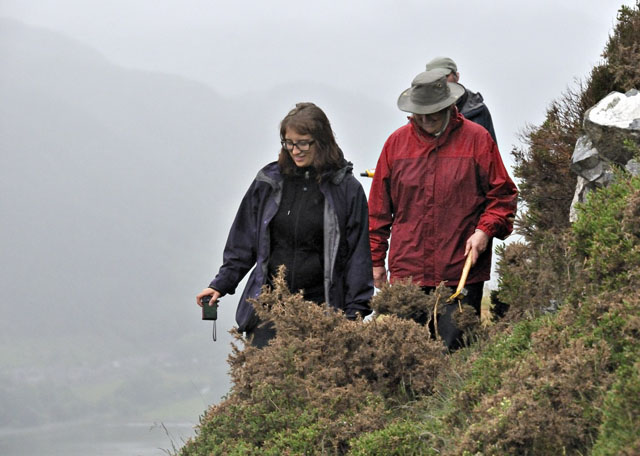
Back nearer HQ and at Ynyslas the spring flowers are looking good (in June!), with flag-iris everywhere that moisture is abundant....
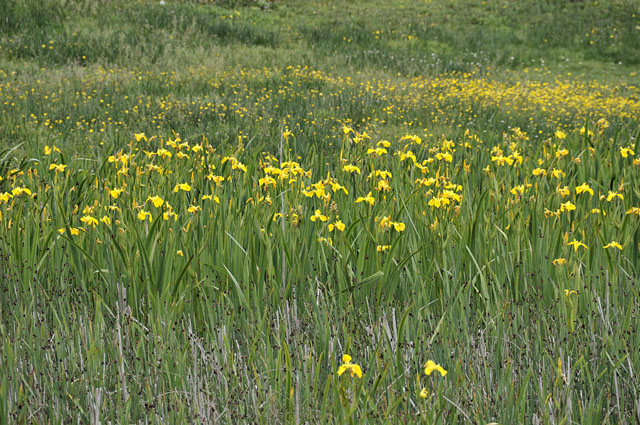
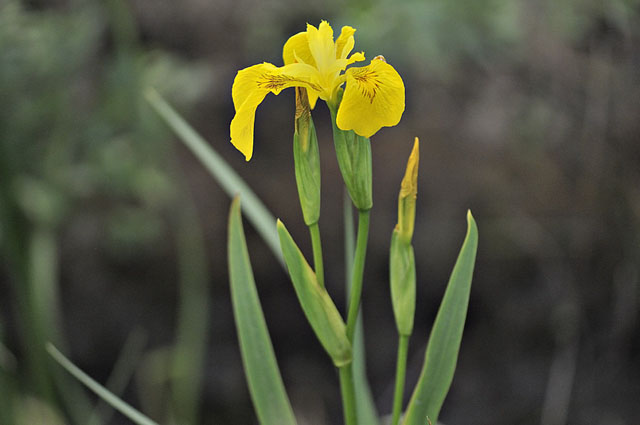
Nearby, the marsh-orchids were putting on a fine show:

But I'll end this post with the reawakening of the sea. After the slowest spring for many years, this was more than welcome. I shot this image of oystercatchers getting airborne one afternoon during a prawning-session along the rockpools on the reef south of Borth...
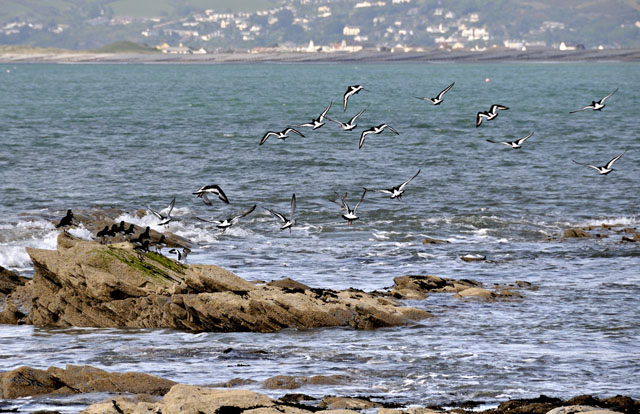
Another afternoon and fishing in a pre-arranged meet with some locals the lack of fish activity was interrupted by a minor blizzard of gannets just a few hundred metres offshore - so THAT'S where the fish are!
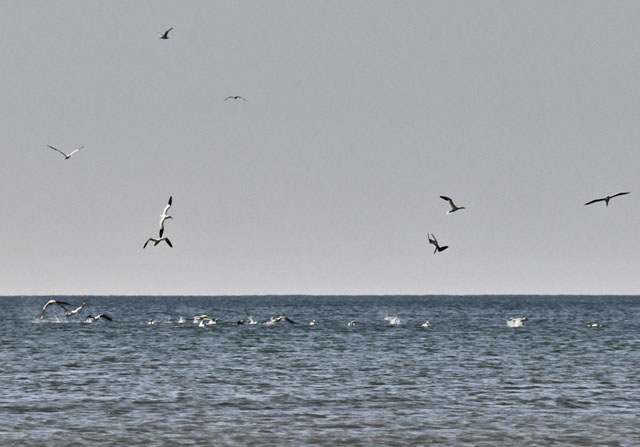
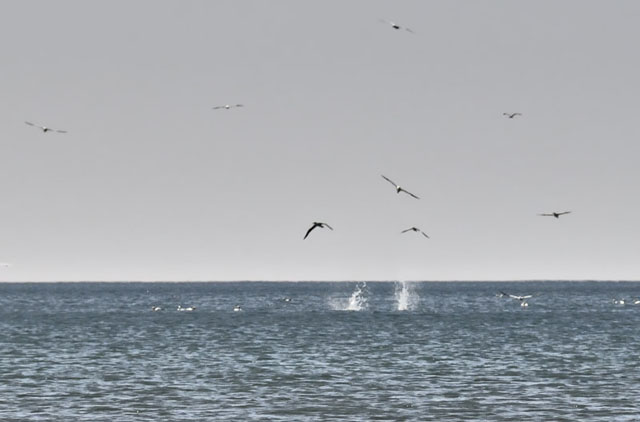

I liked the potentially headbanging chaos in this shot! Mine! No mine! No mine!
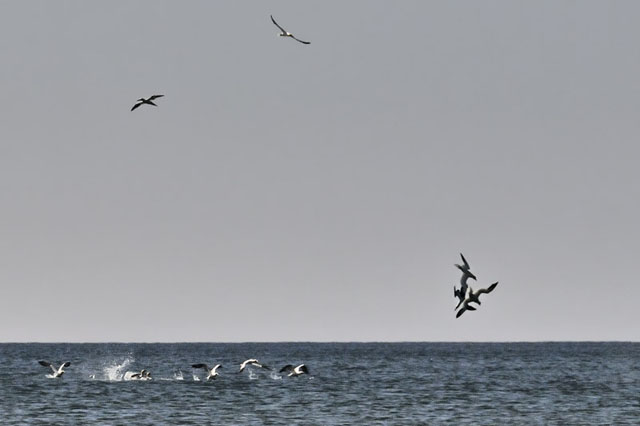
As the copious kelp washed ashore on the flood-tide, the resident dunlins were busy investigating the possibility of food: I was eyeballing where the most weed was washing up and returned the next day to fill all my containers in order to top up the compost-heap!
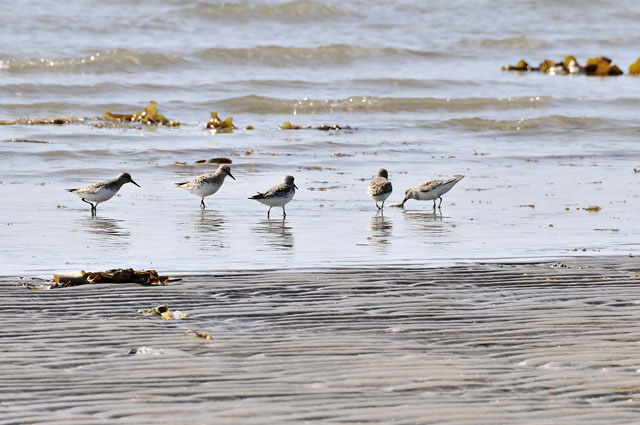
On another day, a mackerel-bash near Aberdaron saw day-long dolphin activity. I don't think they were hunting the mackerel mostly: at one point, faster than I could lock on and focus, larger silvery fish were seen leaping clear as the dolphins lunged out of the water. I think these could have been bass or mullet - I had seen a large shoal of the latter move along through the swaying kelp-fronds beneath my feet a while before...
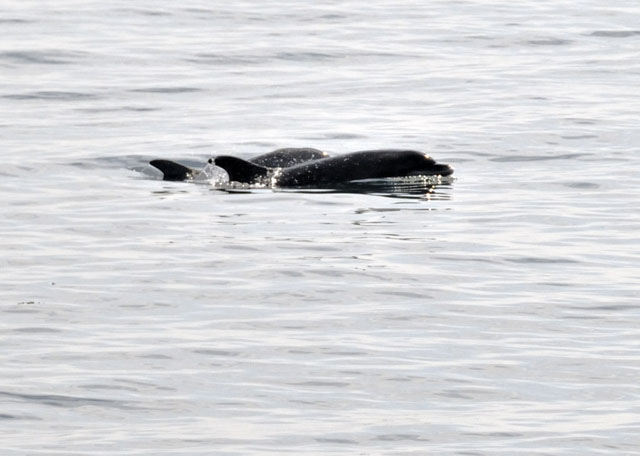
I can certainly see the appeal of kayak-fishing in such conditions!


Some better weather is expected in the coming days - still not much sign of storms but sunshine and fresh fish will make a most acceptable alternative! More soon....
BACK TO WEATHER-BLOG MENU
New! Fine Art Prints & digital images for sale-
Welsh Weather & Dyfi Valley landscapes Slide-Library - Click HERE